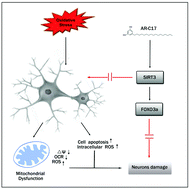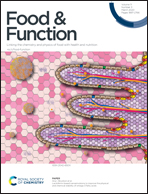5-Heptadecylresorcinol attenuates oxidative damage and mitochondria-mediated apoptosis through activation of the SIRT3/FOXO3a signaling pathway in neurocytes
Abstract
5-Heptadecylresorcinol (AR-C17) is a main component of the alkylresorcinols (ARs), and has been widely used as a biomarker for whole grain rye consumption. In the present study, the neuroprotective effect and potential defense mechanisms of AR-C17 against hydrogen peroxide (H2O2)-induced apoptosis and mitochondrial dysfunction were investigated in PC-12 cells. The results showed that AR-C17 treatment significantly suppressed oxidative damage to cells, and ROS-mediated cells apoptosis. Furthermore, AR-C17 improved multiple mitochondrial bioactivities, reducing mitochondrial ROS levels, maintaining the mitochondrial membrane potential and enhancing mitochondrial respiration, leading to an elevation in the cellular ATP production, maximal respiration and spare respiratory capacity. In addition, AR-C17 exposure dramatically increased the protein expression of SIRT3 and its downstream functional gene FOXO3a. The cytoprotective effect of AR-C17 was abolished by the SIRT3 inhibitor 3-TYP, which led to increased cell apoptosis. Taken together, our findings demonstrate that AR-C17 could be used as a potential nutraceutical in reducing neuronal oxidative damage.



 Please wait while we load your content...
Please wait while we load your content...